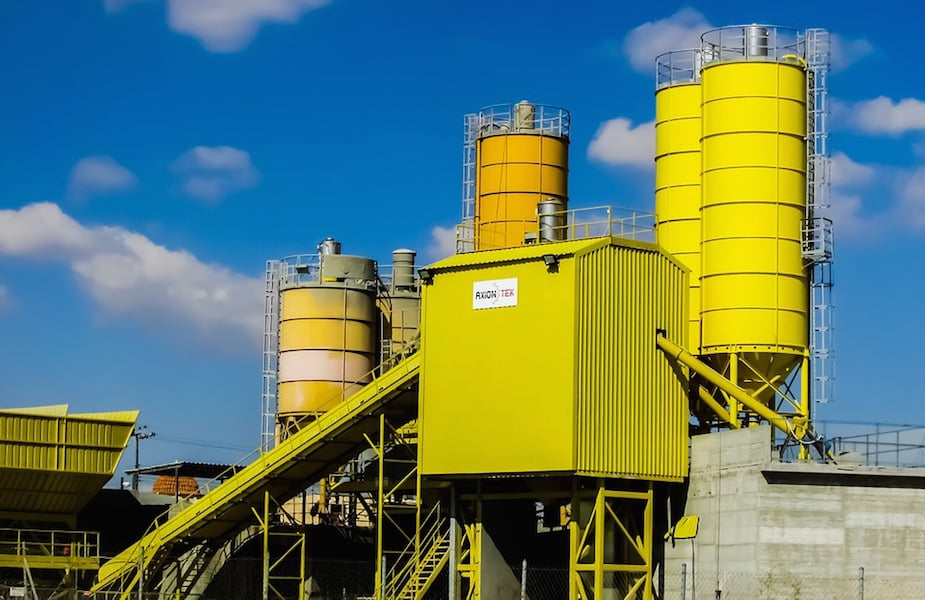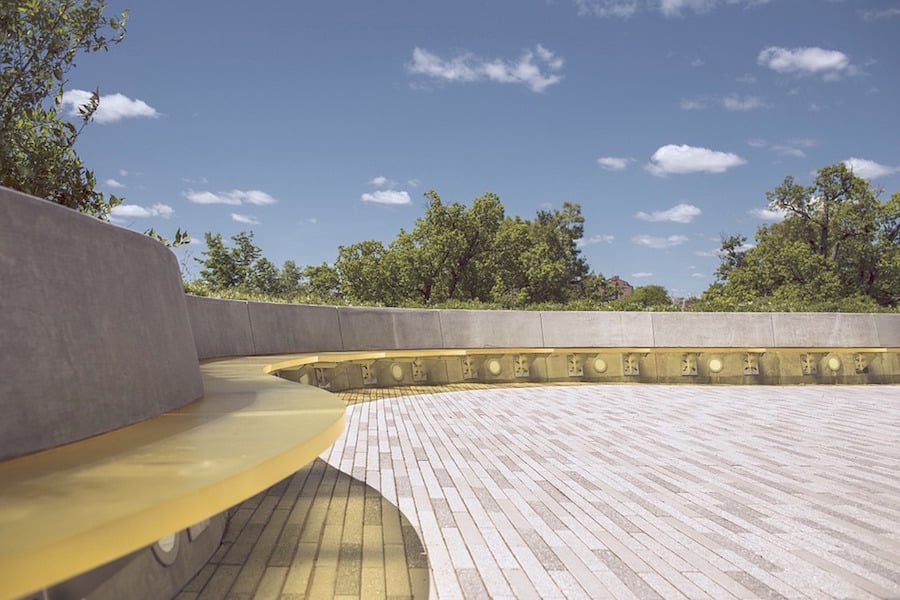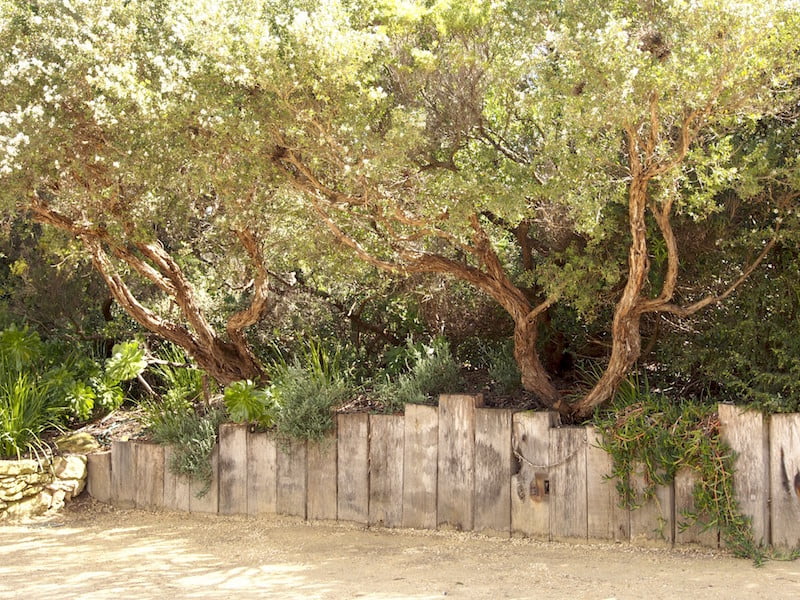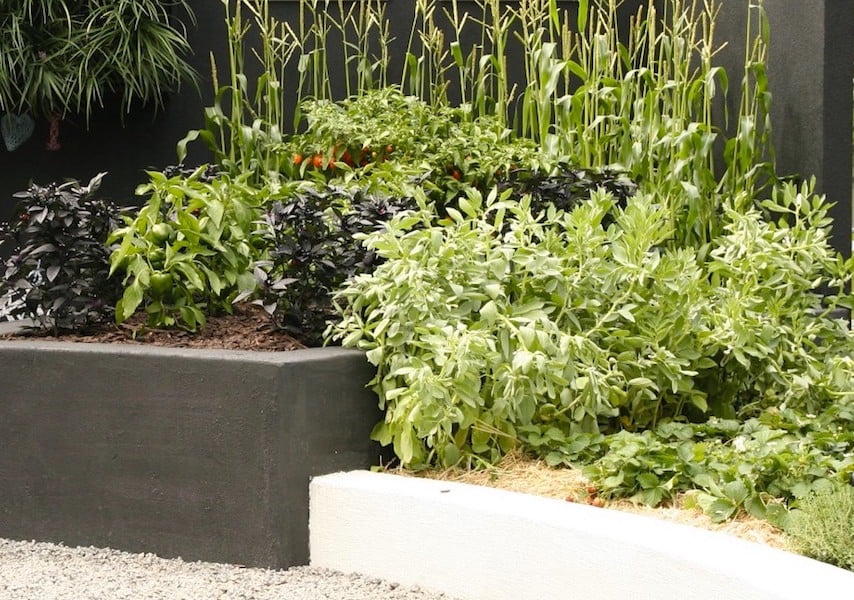Did you know that the environmental impacts of concrete are out of control and that the worldwide consumption of concrete is on its way to being four times greater in 2050 than it was in 1990? Did you also know that concrete is the most widely used material on earth?
 Concrete is made primarily from cement, which is derived from calcium-rich materials like limestone or chalk, crushed up and mixed with clay or fly ash, heated to a high temperature and then ground into a fine powder which we know as cement. Cement, when mixed with water, sand and gravel, forms a paste which coats the sand and gravel particles, and then a chemical reaction called hydration hardens the mix into a single mass known as concrete. CO2 is released both from the energy used to fire the limestone, as well as in the chemical reaction as it forms concrete.
Concrete is made primarily from cement, which is derived from calcium-rich materials like limestone or chalk, crushed up and mixed with clay or fly ash, heated to a high temperature and then ground into a fine powder which we know as cement. Cement, when mixed with water, sand and gravel, forms a paste which coats the sand and gravel particles, and then a chemical reaction called hydration hardens the mix into a single mass known as concrete. CO2 is released both from the energy used to fire the limestone, as well as in the chemical reaction as it forms concrete.
The first law of thermodynamics shows us that energy production needs to be curbed if we believe the law of conversion of energy. Energy can be transformed from one form to another, but is unable to be created or destroyed. In other words, without access to an external energy source, there is not an unlimited amount of energy available.
 We are currently using the available energy at a rapid pace. It cannot continue. Fossil fuels are definitely a problem, but so is concrete production. Cement manufacturing is highly energy– and -emissions intensive because of the extreme heat required to produce it. It also releases a significant amount of CO2, about 5% of man-made global emissions. Its key ingredients – limestone, clay, gravel and sand are all mined, and are finite resources.
We are currently using the available energy at a rapid pace. It cannot continue. Fossil fuels are definitely a problem, but so is concrete production. Cement manufacturing is highly energy– and -emissions intensive because of the extreme heat required to produce it. It also releases a significant amount of CO2, about 5% of man-made global emissions. Its key ingredients – limestone, clay, gravel and sand are all mined, and are finite resources.
 Concrete is used throughout the building industry for homes and commercial premises. It is the most widely used building material because of its strength in many situations. As landscape designers and garden-makers we need to stop and think – is its use in gardens appropriate? Or necessary? And what are we contributing to a global problem of depletion of finite resources and increasing CO2 emissions?
Concrete is used throughout the building industry for homes and commercial premises. It is the most widely used building material because of its strength in many situations. As landscape designers and garden-makers we need to stop and think – is its use in gardens appropriate? Or necessary? And what are we contributing to a global problem of depletion of finite resources and increasing CO2 emissions?
 If retaining walls are required, in my area, cypress pine is a wonderful product sold as sleepers, as an alternative to rendered concrete retaining walls or garden boxes. Its longevity is around 100 years I have been told and it is naturally termite resistant so has none of the toxins as does treated pine. These sleepers can then be used as a retaining wall. Old fashioned? Is there a problem with this, if it is in sync with nature?
If retaining walls are required, in my area, cypress pine is a wonderful product sold as sleepers, as an alternative to rendered concrete retaining walls or garden boxes. Its longevity is around 100 years I have been told and it is naturally termite resistant so has none of the toxins as does treated pine. These sleepers can then be used as a retaining wall. Old fashioned? Is there a problem with this, if it is in sync with nature?
There is, in my opinion, no place for concrete. I don’t need to use concrete in my designs, because I work with nature and use what is naturally occurring.

Reused cypress timber palisade-style retaining wall. Design Fiona Brockhoff
The continuous use of concrete is strongly out of step with of a normal, sustainable garden – it is not clever garden design; it increases the project cost considerably and it is unnecessary, especially considering the environmental impacts. And this style of landscape design by most, but not all, landscape architects and landscape designers is becoming the norm.

Rendered walls used to create raised vegie beds
Clients are asking for gardens with raised garden beds, usually rendered concrete, on flat sites, which is a worry. People need to be made aware of the negative impacts of this extensive and unnecessary use of concrete and stop requesting it; they also need to use landscape architects and landscape designers who are aware of environmentally sensitive issues.
According to the Concise Oxford Dictionary, a ‘garden’ is:
‘a piece of ground devoted to growing flowers, fruit or vegetables’.
There is no mention of rendered, raised planter boxes or concrete en masse. A garden is about plants.

Working as a landscape designer I know that there are so many more sustainable alternatives to concrete – its just a matter of changing direction and taking the client with you. If you have a passion, and confidence in what you are talking about, the client will respect the advice when sustainable alternatives are suggested and why.
We all really need to start becoming more aware of the excessive use of concrete. And it is excessive. We need to start the conversation with others about this worldwide problem – it has to stop. We are all now fully aware of the impacts of fossil fuels, with the exception of those who lack any capacity for common-sense, so we need to make the world more aware of the effects of concrete. It is a major global problem that needs addressing now.

